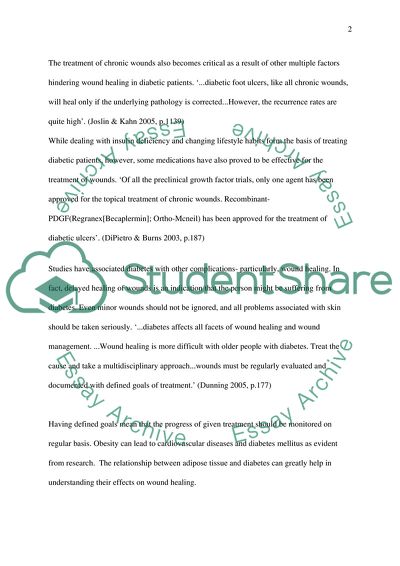Cite this document
(“Diabetes and Wound Healing Literature review Example | Topics and Well Written Essays - 3000 words”, n.d.)
Diabetes and Wound Healing Literature review Example | Topics and Well Written Essays - 3000 words. Retrieved from https://studentshare.org/health-sciences-medicine/1574032-the-effects-of-diabetes-on-wounds-healing
Diabetes and Wound Healing Literature review Example | Topics and Well Written Essays - 3000 words. Retrieved from https://studentshare.org/health-sciences-medicine/1574032-the-effects-of-diabetes-on-wounds-healing
(Diabetes and Wound Healing Literature Review Example | Topics and Well Written Essays - 3000 Words)
Diabetes and Wound Healing Literature Review Example | Topics and Well Written Essays - 3000 Words. https://studentshare.org/health-sciences-medicine/1574032-the-effects-of-diabetes-on-wounds-healing.
Diabetes and Wound Healing Literature Review Example | Topics and Well Written Essays - 3000 Words. https://studentshare.org/health-sciences-medicine/1574032-the-effects-of-diabetes-on-wounds-healing.
“Diabetes and Wound Healing Literature Review Example | Topics and Well Written Essays - 3000 Words”, n.d. https://studentshare.org/health-sciences-medicine/1574032-the-effects-of-diabetes-on-wounds-healing.


